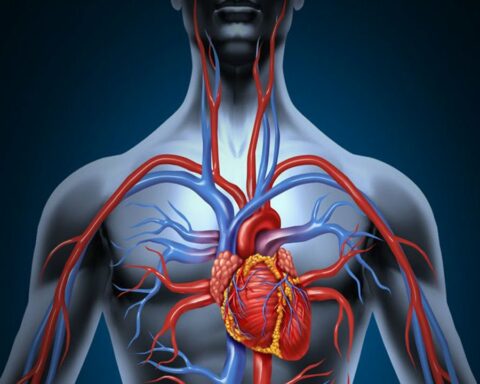Wheatgrass is a type of young grass in the wheat family. It’s loaded with various nutrients which make it beneficial to human health. It’s available as a dietary supplement in liquid, capsule, tablet, and powder forms.
You are aware leafy greens are helpful to the body. But, is there any benefitof consuming wheatgrass? When you first heard aboutwheatgrass, you didn’t imagine it’s a beneficial plant. Well, it’s a highly nutritious plant.This member of wheat crop is often consumed as afresh juice, or sometimes in a powdered form. You’ll still benefit from it regardless of how you consume it. So, what makes wheatgrass important to your body?
Wheatgrass is packed with nutrients
Wheatgrass is fully loaded with nutritional properties. It’s full of minerals, vitamins, and many other essentials. The main nutrients it contains includes;
- Potassium
- Flavonoids
- Iron
- Amino acids
- Calcium
- Magnesium
- Vitamin C, E, and A
What is wheatgrass?
Wheatgrass looks like a lawn plant. Wheatgrass is a grass of young wheat plants, yet has a very high nutritional value. It’s thick, dry, and looks likestraw or hay but is bright green colored. You can add it to smoothies or juices or consume its supplement as powder or capsules.
What are the health benefits of wheatgrass?
Reduces risks of contracting diseases
Generally, individuals who consume foods rich in antioxidants have reduced risks of getting sick. Like any other green plant, wheatgrass is also loaded with many antioxidants like vitamin C, chlorophyll, and flavonoids. These compounds help to fight off damaging consequences of free radicals and also decrease inflammation.
It helps to lose weight
Wheatgrass has a low content of calories, which makes it a great alternativeif you’re targeting to loseweight or maintain a healthy body mass. That’s not the end of its goodies. High amounts of antioxidants and protein in wheatgrass give it enough power to boost metabolism in individuals. Hence, it’ll be easier to burn extra calories. Moreso, a good metabolismwill assist in supporting yourefforts of eatinghealthfully andworking out. If your metabolism is cooperative,you’ll get faster results, and maintaining your desired weight goal will be easy.
Helps with digestion problems
Wheatgrass has been used for digestive issues for a long time. Researchers are confident in this plant’s ability to reduce gastrointestinal conditions like ulcerative colitis. Also, it seems helpful when you have diarrhea and any other digestive problems.
Helps to fight infections
Antibacterial properties found in wheatgrass assistin preventing infections. Also, it helps to treat bacterial infectionsthat arenot cooperating with antibiotics.
Assist in promoting healthy cholesterol levels
Antioxidants present in wheatgrass helps to fight off the build-up of dangerous plaque in arteries especially after a high-fat diet. Adding it to your diet will increase levels of good cholesterol while decreasing content of bad cholesterol. There’s no doubt introducing wheatgrass into your diet will protect your heart in all ways.
Helps to maintain healthyblood sugar levels
Eating diets full of vegetables and fruits is not the only way to reduce risks of diabetes and unstable blood sugar levels. Wheatgrass too can help you have a healthy balance of sugars in the blood. Consume it regularly through smoothies or cook with it to gain maximum health benefits.
Improves your immune system
Wheatgrass possessesimmunomodulatory abilities which makes it capable of stimulating or suppressing the body’s immune response according to your system’s needs. Try adding wheatgrass to your diet during flu and cold season and you’ll realize the importance of this plant in your immune system.
Offers protection against cancer
Once again, antioxidants in wheatgrass prove to be useful to the human body. They help to fight off cancer cells, particularly leukemia andmouth cancer cells.
What should you be ready for when using wheatgrass?
The most recognized downside of wheatgrass is that it has a grass-like taste. For some individuals, the flavor is bearable while for others they cannot tolerate it. It’s worth knowing thesepossible side effects before consuming wheatgrass;
- Fever
- Constipation
- Upset stomach
- Headache
- Nausea
Not all individuals will experience these symptoms. The possibility of experiencing them depends on your body’s immune system. For the few people who will experience these symptoms, they’ll not feel those discomforts for long. Within 2 weeks they’ll fade because the body would’ve adjusted to wheatgrass. Pregnant and breastfeeding women should avoid taking wheatgrass because they’re more sensitive to allergic reactions compared to other individual groups. Also, anyone allergic to grassor wheat should avoid it. It may also be harmful to individuals with blood disorders, gluten intolerance, or celiac disease.
Who are in great need of wheatgrass?
Everyone needs wheatgrass because of the healthbenefits it provides. However, certain people have higher needs for it than others. This group include individuals with;
- Heart disease
- Blood disorders like thalassemia
- Rheumatoidarthritis
- Anemia
- High blood pressure
- Those targeting to eliminate drugs, toxins, metals, and cancer-causing compounds from the body.
- Tooth decay
What are the medicinal applications of wheatgrass?
- Lowering blood pressure
- Relieves gut
- Improves digestion
- Eliminates heavy metals from blood
- Supports a healthy immune system
How can you make your wheatgrass taste better?
The Not-so-pleasing taste of wheatgrass is a big turn-off for most individuals. It tastes like grass, which is not a pleasant flavor for many. Instead of avoiding wheatgrass completely, improve its flavor to make it delicious. One of the greatest ways is consuming in form of smoothie or juice. Make it more refreshingby mixing it with an ingredient that has a strong taste, such as pineapple. Other alternatives you can consider include mixing wheatgrass with honey,milk, or fruit juice.
What are the other names of wheatgrass?
Other names forthis plant include witch grass, quack grass, Elymusrepens, Triticum, Agropyron, couch grass, dog grass, cutch, and many more names.
Conclusion
Generally, wheatgrass is considered healthy and safe for consumption. Its richness in nutrients boosts the immune system and eliminates harmful bacteria in the digestive system. Also, it helps to treatchemotherapy side effects, diabetes, anemia, and infections. Wheatgrassisnot a magical cure. So, it should only complement a well-balanceddiet and not replace other types of food.
- Learn to Enjoy Self-care Routine - September 21, 2023
- Jonathan Aufray’s Story - July 29, 2023
- From Public Housing To Ivy League: The Inspiring Journey of Crystaltharrell.com and its Founder - June 7, 2023






